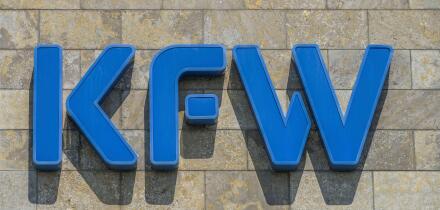The World Bank kicked off its new fiscal year this week with a seven year global benchmark in dollars. While it will still rely primarily on the dollar market to fund its $45bn-$55bn target, the issuer hopes to increase its funding in euros for the sake of better asset-liability management (ALM).
This week's $3bn 4% July 2030 Sustainable Development Bond was priced at 43bp over Sofr mid-swaps on Tuesday, after 1bp of tightening, by bookrunners Bank of America, BMO, JP Morgan and Morgan Stanley.
The bond landed at 16.2bp over US Treasuries, and had tightened to 15bp in the secondary market by Thursday morning.
“Strategy-wise, we want to continue to diversify our investor base and remain active in all the core markets including Canadian dollars, Australian dollars and New Zealand dollars,” said the World Bank’s head of funding Andrea Dore, who also noted additional markets that have opened up in Europe, including Swiss francs as well as those for structured products, such as inflation-linked bonds.
US dollars should make up two thirds of the World Bank's funding. “We expect the majority of the funding to still come from the dollar market," said Dore, "but because of ALM considerations, we want to issue more euro bonds to extend our duration where possible.”
Another World Bank Group issuer, International Development Association, is looking to raise $8bn-$10bn this fiscal year, which began on July 1 for both institutions.
The IDA has predominantly funded in euros over the last couple of years and most recently issued a dollar benchmark in April 2021.
Dore said IDA will return to the dollar market in the new year. “But a significant part of the funding will come from the euro market, where is a natural market for issuers like IDA which needs long tenor and is a fixed rate borrower.”
Rare seven year
For the World Bank’s 2030 benchmark this week, after setting IPTs at Sofr mid-swaps plus 44bp area on Monday, the leads gathered $2.7bn of indications of interest before opening books at the same level on Tuesday morning. The final book was $4.25bn.
The new trade followed last week’s $2bn 2028 deal from International Finance Corporation and a $4bn 2033 by KfW.
Some bankers off the deal had expected the World Bank to bag more than $3bn. One thought the trade didn’t have “the strongest reception” and the pricing “certainly isn't generous and the order book reflects that”. He saw 1bp-2bp of new issue premium, in line with the view of those on the deal.
But both he and a second banker away acknowledged the difficulty in trying to issue in a longer maturity than five years in dollars.
It was a point that the lead managers were also keen to make. “It’s smaller than the KfW trade and maybe it’s a bit disappointing to get the smaller book, but KfW had the rarity value and was more generous about pricing,” said a bookrunner on the World Bank deal. “And seven years is a tricky tenor where you would usually expect the $3bn-$4bn kind of size.”
While the World Bank’s two dollar benchmarks earlier this calendar year were both $5bn, Dore said the issuer was not gunning for size this week.
“We wanted to get a trade done before the market closes for the summer, and had a lower size aspiration because it is July. It’s also the start of our fiscal year so we’ll have more flexibility down the road,” she said.
Dore added the seven year point was not a deep market, saying even $1bn would have been tricky just a few years ago. “In my view, a $3bn seven year could be even harder to achieve than a $5bn five year, so we’re very happy to be able to do $3bn with a diverse and high-quality investor base,” she said.
Having last opted to issue a long five year in dollars in early April, the World Bank wanted to fund longer for better asset-liability management. Between seven and 10 years, the issuer considered the supply dynamics with the seven year segment undersupplied, Dore added.
The Tuesday trade was only the third in this maturity so far this year from a public sector borrower, following the World Bank’s $5bn February 2030 and European Investment Bank’s $4bn July 2023 from February and April, respectively.
Meanwhile, half a dozen 10 year trades have been sold over the last seven months, including from supranationals Asian Development Bank, EIB and Inter-American Development Bank.
Attractive spread
The World Bank’s trade attracted more than 100 investors, with a 49% participation from banks, bank treasuries and corporates, 36% from central banks and official institutions, and 15% from asset managers, insurance and pension funds.
The seven year maturity made the deal more investor-friendly, said Dore, especially for bank treasuries which similarly took a large chunk of the World Bank’s last seven year deal in February.
“[It] is the most attractive part of the curve for asset-swap buyers, with the seven to 10 year asset swap curve being relatively flat,” she said. “And for outright yield buyers, let’s not forget the inversion of the curve. So this is the maturity that makes the most sense to both groups at this point of time.”
KfW’s 10 year trade last week came at 45bp over swaps, only 2bp higher than World Bank’s final spread despite being three years longer in maturity. The pick-up over Treasuries was slightly better in comparison, at 20.8bp versus 16.2bp.
On a yield basis, investors were getting 4.188% from KfW and 4.033% from World Bank.
Accounts from Europe, Middle East and Africa bought 50% of the bond, the Americas 34%, and Asia 16%.







